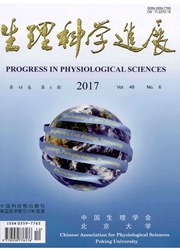

 中文摘要:
中文摘要:
纤维结缔组织在身体中的作用是支撑、连接和分隔不同的组织和器官。最近,人体断肢解剖研究证实,一种定向纤维结缔组织组成了一种长程液体传输通路。其解剖位置有两种:皮肤传输通路(包括真皮、皮下组织和脂肪小叶间隔)和血管周围传输通路(静脉和动脉周围纤维结缔组织)。这种纤维通路的三维空间内部结构是一种纵向分布、相互连接的纤维丝,在每一根纤维丝及其周围水凝胶之间形成了一种固液界面区;纤维结缔组织中的液体能够通过这种界面区传输,命名为"生物界面流体传输通路";存在于各种组织和器官纤维基质中的液体,很可能并没有被束缚在"组织凝胶"中,而是在尚未明确的某种物理机制的作用下,朝向一定的方向传输。这些研究结果为理解纤维结缔组织的功能提供了一个新的视角。
 英文摘要:
英文摘要:
Fibrous connective tissue is one of the four types of biological tissues that supports,connects or separates different types of tissues and organs in the body. Recently,the anatomical findings obtained from human amputee subjects testified that an oriented fibrous connective tissues constitutes a long-distance fluid transport pathway,the anatomical locations of which are the presence of two types: those of the cutaneous pathway( located in dermis,hypodermis or the interlobular septum among adipose tissues within the hypodermis) and those of the perivascular pathway( located in fibrous connective tissues surrounding the veins and the arteries). The intrinsic three-dimensional architecture of each fibrous pathway is the longitudinally running and interconnected fibers,upon which,a solid-liquid interfacial zone is formed physically between each fiber and its surrounding hydrogel and responsible for fluid transport through fibrous connective tissues. Through these interfacial zones,named " a biotic interfacial fluid transport pathway",fluids within fibrous matrix in any tissues or organs are not fixed within " tissue gel" but would be driven towards designed destinations via various as yet unidentified physical mechanisms. Current data provide a novel understanding of fibrous connective tissues in life science.
 同期刊论文项目
同期刊论文项目
 同项目期刊论文
同项目期刊论文
 期刊信息
期刊信息
